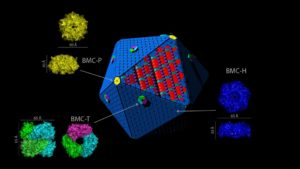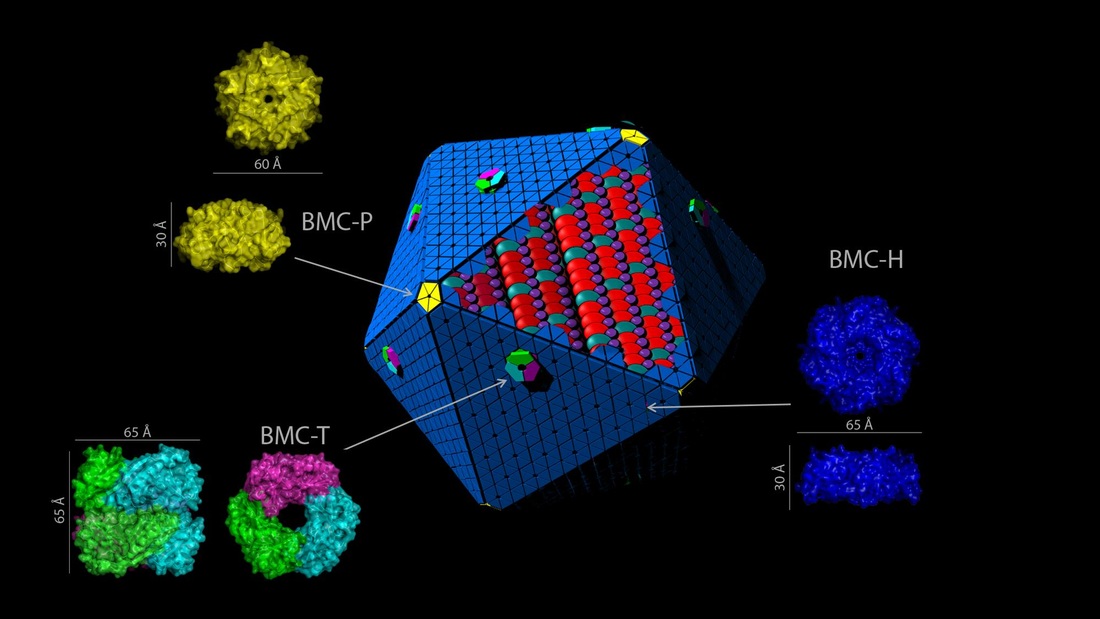
Different types of proteins fit together like legos to build the carboxysome shell structure, located in the center of the image. Credit: Kerfeld lab.
Many bacteria contain structures called carboxomes that act as mini factories for various purposes, such as building sugar from carbon dioxide through photosynthesis. Researchers affiliated with Berkeley Lab’s Molecular Biophysics and Integrated Bioimaging (MBIB) Division and the Department of Energy Plant Research Laboratory and Department of Biochemistry and Molecular Biology at Michigan State University are studying how these factories are constructed and how they function. In a key step toward identifying the essential building blocks, Manuel Sommer and Cheryl Kerfeld have analyzed more than 200 sets of genes from different cyanobacteria—also known as blue-green algae—that contain carboxysomes. The work lays the foundation for designing new kinds of factories that could produce synthetic materials, such as fragrances or the precursors for green fuels. The study was published in the Journal of Experimental Botany. Read more from the MSU-DOE Plant Research Lab.




